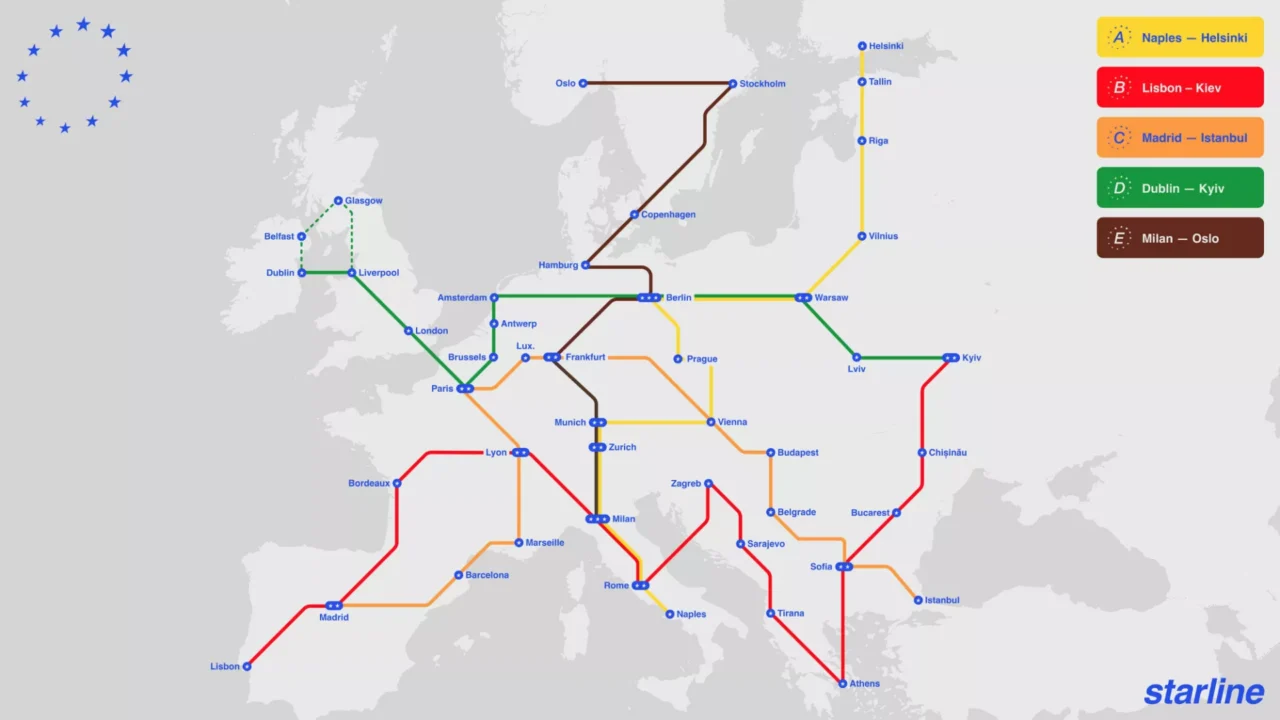The future of European travel is on the horizon, with an ambitious plan to transform the continent’s rail network. The proposed high-speed rail system, led by the Copenhagen-based think tank 21st Europe, promises to drastically cut travel times, connecting major cities like Kyiv and Berlin in just five hours.
Currently, traveling between these two cities takes nearly a full day by train. With 21st Europe’s new high-speed rail network, trains will operate at speeds of 300-400 km/h, making journeys much quicker and more efficient. This leap forward in rail technology will allow passengers to seamlessly travel across Europe, cutting down on travel time between some of the continent’s busiest cities.
The high-speed rail network is designed to function much like a metro system, with regular and fast connections between major urban centers. The think tank’s vision includes 39 destinations spanning the entire European continent, with lines connecting key cities such as Berlin, Milan, Kyiv, and Munich, and even extending to the UK, Turkey, and Ukraine. Passengers will be able to travel quickly between economic hubs, fostering better connectivity and boosting regional economies.
One of the standout features of this new rail system will be its stations, which will be strategically located just outside major cities. These stations will not only be transport hubs but also cultural centers. Travelers will find a variety of amenities, including restaurants, shopping, concert halls, museums, and sports venues. The goal is to create vibrant, multi-purpose spaces that enhance the travel experience and become integral parts of the cities they serve.
The trains themselves will offer a unique passenger experience. Instead of traditional class-based compartments, the new system will feature areas tailored to different needs, such as quiet zones for work and family-friendly spaces. This innovative approach is designed to ensure comfort for all types of travelers, whether they’re looking to work, relax, or spend quality time with loved ones.
In addition to cutting travel times, the new high-speed rail system will significantly reduce the environmental impact of European travel. By providing a faster, more efficient, and greener alternative to road and air travel, it promises to become a key player in Europe’s push for more sustainable transportation options.
While the 21st Europe high-speed rail network is still in the planning stages, its vision is rapidly gaining traction. If implemented, it will mark a revolutionary step forward in European transportation, making travel between major cities like Kyiv and Berlin more accessible, comfortable, and environmentally friendly.





